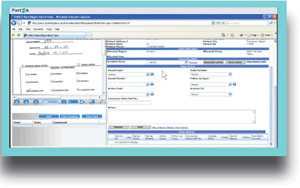
Data Mining and Predictive Analytics Help Medical Practices Envision Cashflow

MANY PRACTICES ARE SITTING ON A GOLD MINE: A LARGE QUANTITY OF CLAIMS DATA. WHEN LEVERAGED WITH THE APPROPRIATE BUSINESS INTELLIGENCE AND EXPERIENCE, THIS DATA CAN PRODUCE HIGHER REVENUE AND BETTER DECISION-MAKING.
Making the right decisions at the right time can lead to greater staff productivity and enhanced operational efficiencies. Once viewed as old records to store, claims data can now be the basis for predictive analytics.
Knowing how much and when revenue is coming in is a major hurdle in operating a successful medical practice. Practices can benefit substantially from the foresight that comes from predicting and planning for revenue collection. This foresight greatly impacts office operations such as hiring, purchasing and other business functions that rely on medical collections.
Recognizing the need for robust, intuitive revenue management system that can harness the tremendous value of data, Porteck designed the Porteck Accounts Receivable and Billing Collections System (PARCS); this web-based, enterprise-level denial management and follow-up software was initially developed for radiology practices in 2009. The rigorous data requirements inherent to radiology medical billing led Porteck to further develop its capacities. It is now available for all practice types to leverage data mining to enhance revenue collections.
PARCS Uses Predictive Analytics Forecast Future Revenue
PARCS mines claims data to: 1) provide non-predictive analytics such as end-user query-based analyses or reports that summarize, and 2) organize data retrospectively. Its more valuable asset, however, lies in its predictive analytics function, which can be used to forecast expected revenue based on claims history.
Reimbursement Analysis
PARCS’s reimbursement analysis analyzes four months of claims data—what has been billed set against historical collection experience—to predict how much money a practice should be able to collect over a certain time. It takes information from insurance contracts (such as expected timeframes for payment, bundling rules and coverage for different procedures) and applies rules to estimate revenue in net dollars.
PARCS mines claims data to identify relationships within the data to make predictions about each claim and identify anomalies or leakage to develop high-value actions that result in more claims collected faster. It integrates experiential intelligence (such as seasonal variations in collection cycle, rate of collection by payer, history and timeframe of receivables and other factors) to predict 30-, 60- and 90-day revenue scenarios.
If the fee schedule is missing, PARCS will automatically use historical data to look at the last six months of activity by CPT to identify collection rate in order to project future income. It applies the paid percentage to see how much to expect and when.
Identifying Potential Denials
In the process of predicting revenue, the reimbursement analysis will also predict claims’ potential for being denied. PARCS analyzes denial activity by each payer and by referring sources, and then projects how much revenue is expected by types of procedures billed and groups them by categories.
Anticipating rigorous billing requirements, PARCS intuitively reconciles coding anomalies or irregularities. For example, if a code requires an authorization and the claim is missing the pre-authorization number, it will not expect payment. And if a payer does not pay for acupuncture, the expected charge will be zero.
Each denial is classified as either a valid or invalid error, attributable to internal or external parties. Each error is routed to a rationale indicating reasons for the denial so that an appropriate follow-up action can by pursued.
PARCS also identifies under-payment based on contract loaded into the system, which flags when under-payment is detected. It provides separate fields to explain the previous item so that follow up can be tracked.
Leveraging valuable data-points within claims and applying specific, experiential business logic, Porteck’s PARCS system provides unequaled analytical tool to help provider practices and hospitals anticipate revenue collection. The system’s ability to predict denials and offer follow-up insight helps practices to identify inefficiencies and inaccuracies within its workflow; the result is better coding practices, which in turn results in higher revenue collection.
5010 Conversion Enforcement Extended until June 30...
The Centers for Medicaid and Medicare Services (CMS) organization has extended the 5010 conversion compliance date from January 1 to June 30, 2012. The reason for the extension, according to CMS, was that practices reported cash-flow issues related to the conversion. And while many payers have already instituted changes, not all clearinghouses are successful converting claims data. The result is that providers are receiving acceptance reports although the claims are not being processed by the carriers.
According to CMS, all physicians and other HIPAA-covered entities should continue to make every effort to use the new standards, but CMS will not take any enforcement action until after June 30. For practices that have not had practice management system software (PMS) upgraded by a vendor and not conducted testing with key trading partners, the American Medical Association recommends these practices contact their PMS vendor to obtain necessary software upgrades.
The American Medical Association has put together a comprehensive guide for practices related to the 5010 conversion, which can be access through the following link:
http://www.ama-assn.org/ama/pub/physician-resources/solutions-managing-your-practice/coding-billing-insurance/hipaahealth-insurance-portability-accountability-act/transaction-code-set-standards/version-5010-electronic.page
To download a PDF copy of PorteckInsight, please click here.
